Isn't that cold? So go to the conquest of Norwegian fjords to discover these little corners of paradise.
Like the diamonds, several million years have been needed for the fjords to finally reveal their splendor. Everything begins during the Prehistory, when a huge climate change occurs. The rise in temperatures allowing these green patches to get out of their ice prison.
Then, over time, nature develops to offer this huge palette of greens to which the crystalline blue of the sea juxtaposes. These color arrangements even resist the curiosity of men when they become ingenious enough to tame the contrary elements.
Since this secret has been pierced, they now come together by thousands – even by millions – to contemplate this landscape of postcard. Because the Fjords have this ability to magnify at any time of day or night. Whether the sun shines or the copper shades of the northern lights, these natural elements enhance an already beautiful view.
If you do not know what is called the Norwegian West, Wanderlix gives you the secrets of one of the most beautiful regions of Europe.
Foreword
Because of the vastness of Norway, renting a car is essential unless you have booked a complete service at a tour operator. In addition, the fjords being spread from the North to the South, don’t hesitate to stay at least two weeks on site if you want to make the trip we offer.
In addition, a good physical condition is essential for the many hikes offered around the fjords. Indeed, walking is the best way to reach the heights and thus enjoy the views that are available to you.
The weather can be capricious and prevent you from enjoying your excursion completely or even forbiding it. We therefore requested the period from May to September. Finally, don’t hesitate to dress warmly, the rays of the sun will not always be there to warm you.
1. The Lysefjord, lord of the stone
Stavanger will be the starting point of your journey. The port city has a well-served airport but a stopover is mandatory to reach it. This solution remains the most viable, unless you prefer to arrive in Oslo then drive for more than 7 hours. However, you will discover through this article that Norwegian roads are worth the detour.
A major renovation project began in 1994 under the leadership of the Scandinavian state. Reuniting more than 50 artists and architects – including the Snøhetta company that designed the plans of the famous opera of Oslo – this vast programme lasted 11 years and focused on 18 national roads. You will see, the result is bluffing!
To reach Lysefjord, you must take the road to Øygardstøl. Not included in the previously mentioned list, however, it would be worth a waiver as long as its 27 hairpin turns make it possible for Peter Sollberg. Too bad you can’t lift your nose off the road because the surrounding nature also deserves a look.
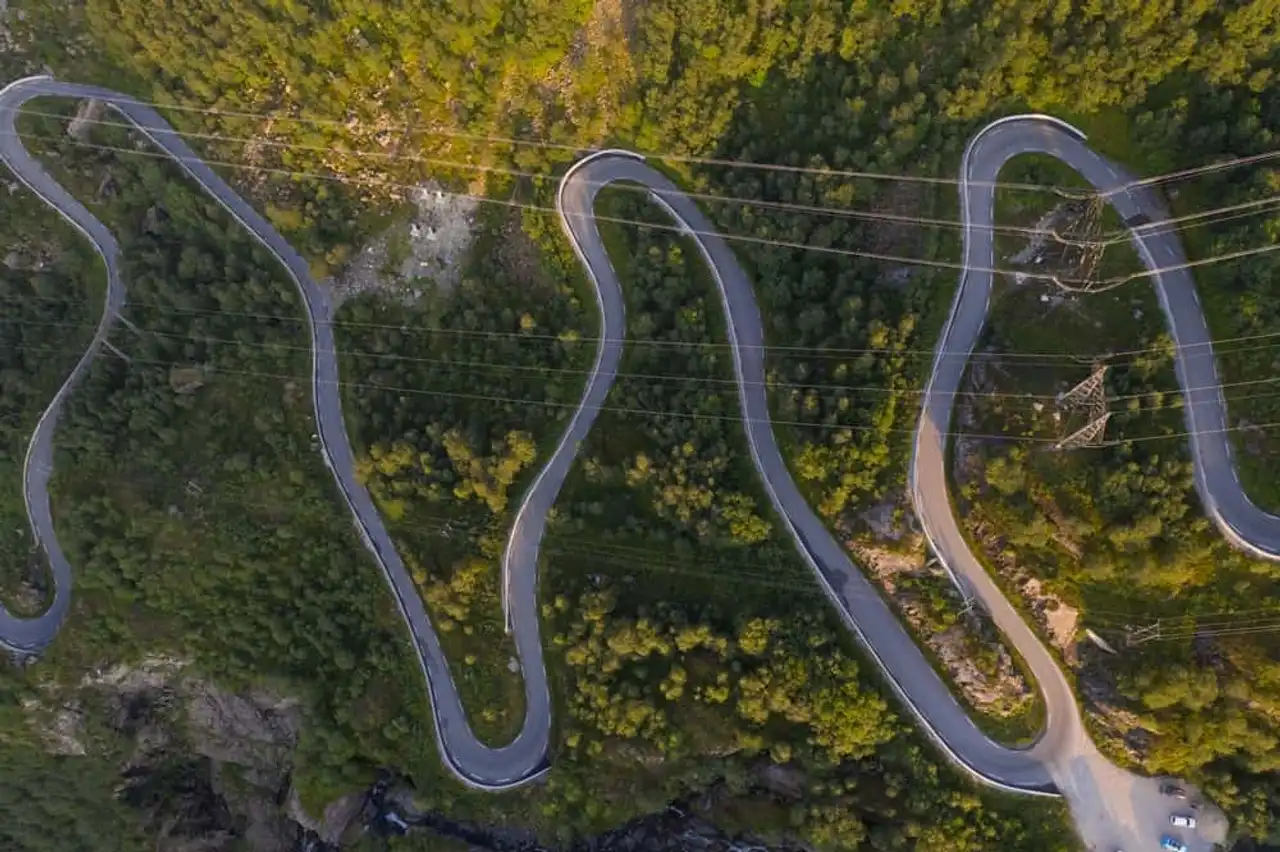
Photo credit: Shutterstock – szewo.com
But before you feel the excitement of a seasoned rally driver, you will stop right before the first turn to start your first hike, the Kjeragbolten. Parking is planned for this purpose.
The Kjeragbolten, the rock stuck
11 kilometers separate you from this famous rock that seems to have been smashed in force between two cliffs. Organisms will be asked as the average duration of this hike is about 6h round trip. In addition, your journey will be full of smooth and sometimes very lean walls. Fortunately iron chains are present, without which your progression would be almost naughty.
Once you arrive at the top, you will be able to do as many small malignant men who, each year, challenge the laws of physics by being photographed on the Kjeragbolten. Don’t forget, however, that you’re more than 1,000 meters above sea level. The harder the fall.
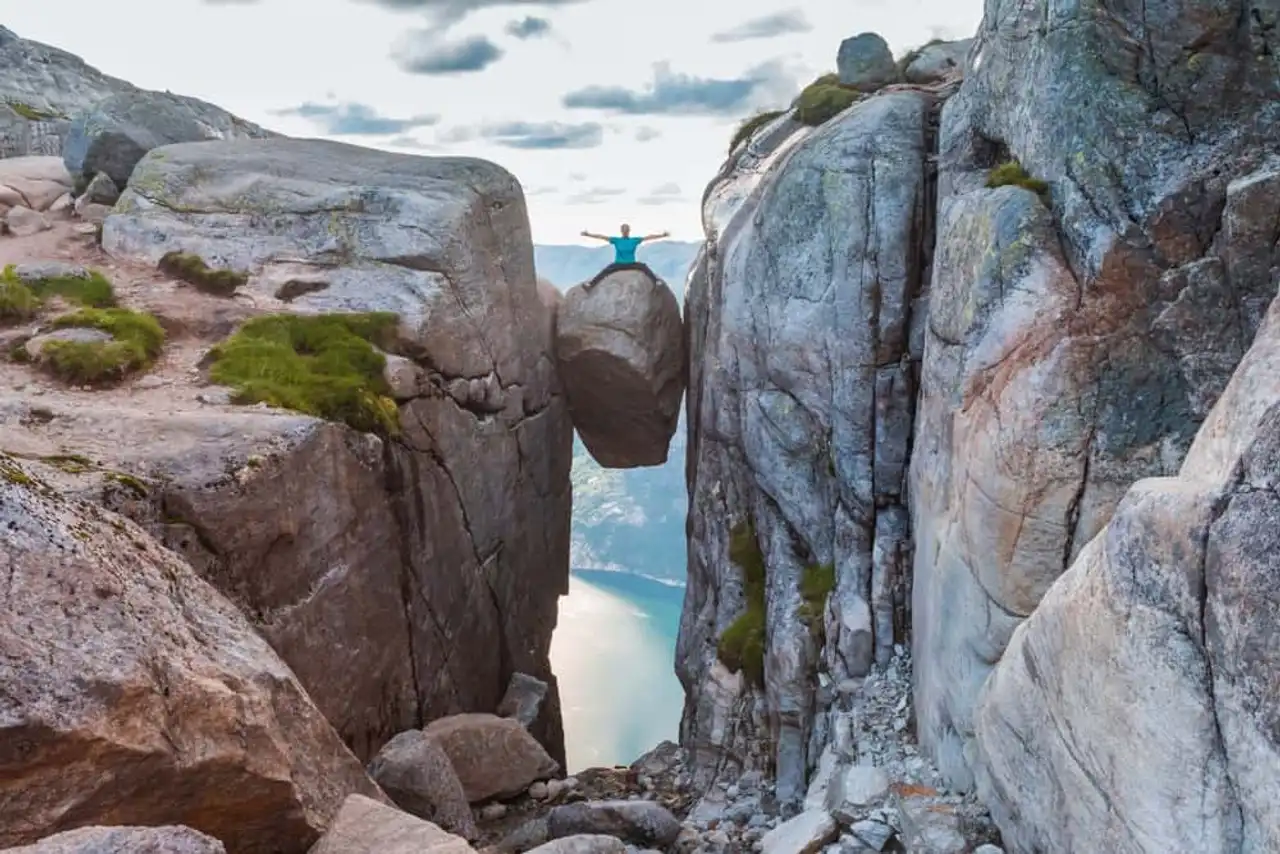
Photo credit: Shutterstock – Kochneva Tetyana
After this time loaded with adrenaline, your body deserves a little rest. So look for the best place to land to admire the beauty of the landscape. You then understand why Hans Dahl – the famous Norwegian native painter of a village near the Fjord d’Hardanger – found inspiration by contemplating this show. From blue, green, white, a real kaleidoscope offers you!
Your exploration of Lysefjord is not finished, however, because another sensational spot awaits you. But "who wants to travel far cleanses his mount" then postpone this to the next day and join the village of Lysebotn to sleep there. This will allow you at least to give you a last little pleasure by going to the collision of the famous road with the 27 turns.
The Preikestolen
This is the most popular hike in the country! Eminent advice, either you're going to the aurora or you're going to the end of the afternoon. This will prevent you from crossing the world, a significant point if you want to fully enjoy the Preikestolen.
Less sporty than the previous – achievable in 3 hours of back-to-back time with only 3 slightly sporty passages – this hike will lead you to a majestic summit, symbol of Norway. For those who really want to take their time, swim in the lakes scattered on either side of your path. In the summer, temperatures can rise beyond 30 degrees, clear and clear water will be a good way to cool down.
If the Kjeragbolten frightened you then the Preikestolen will tetanise you. Perched at 600 meters high, this rock of 25m2 suspended in the void will give you some cold sweats. The most temeral will approach the precipice while the most rational will be held at a good distance. However, everyone will keep in mind this unique moment. Judging on the heights, the desire to "I am the master of the world" will be pressing.
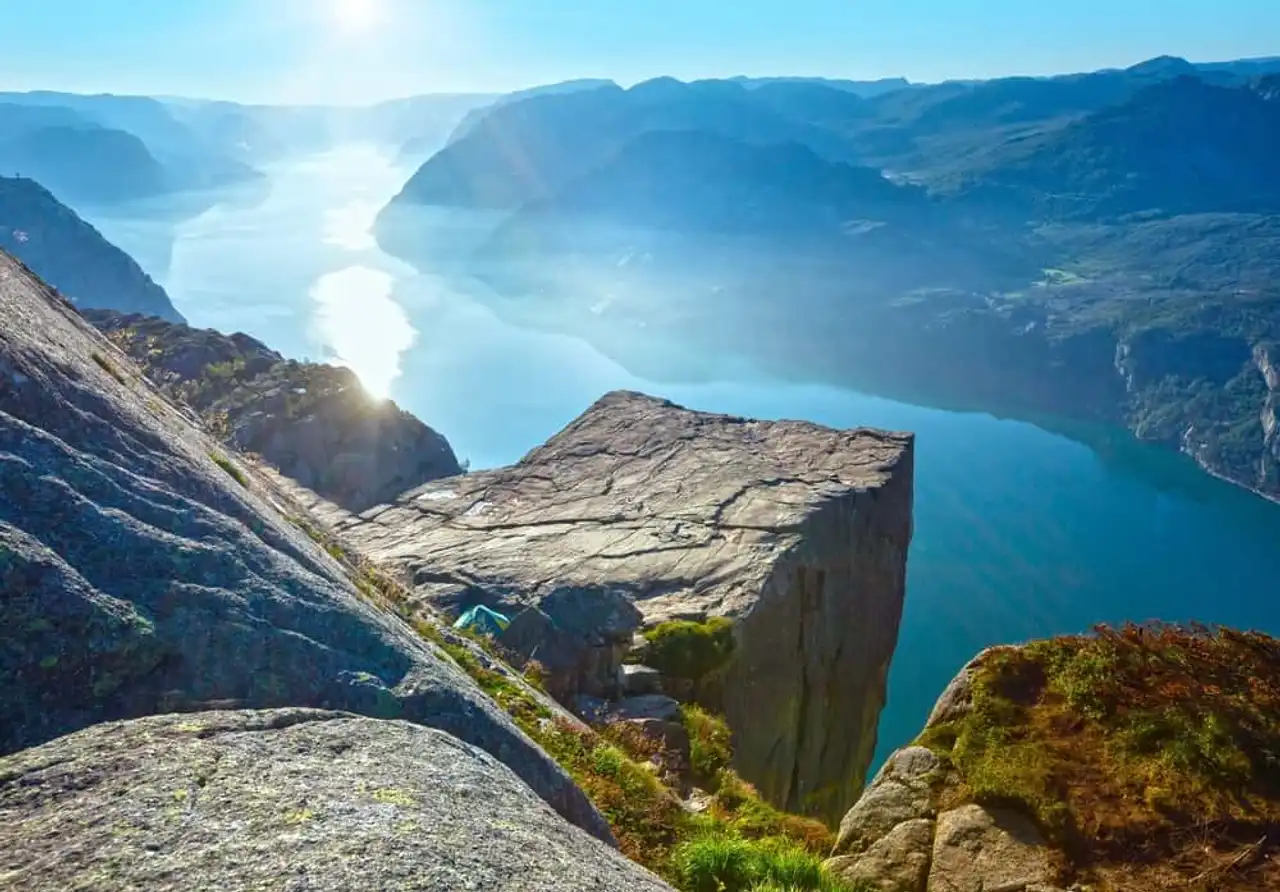
Photo credit: Shutterstock – Landscape Nature Photo
It is now time to get back to the North to discover another spectacular fjord, the Hardangerfjord. Put the course on. Bergen .
2. Hardangerfjord, nature in all its states
Bergen, the capital of the Fjords. It will be your back base for the next 3 excursions. This is a real stagger if you want to pause your northern exploration slightly. Indeed, ranked as a UNESCO World Heritage Site, Bergen is full of places to discover.
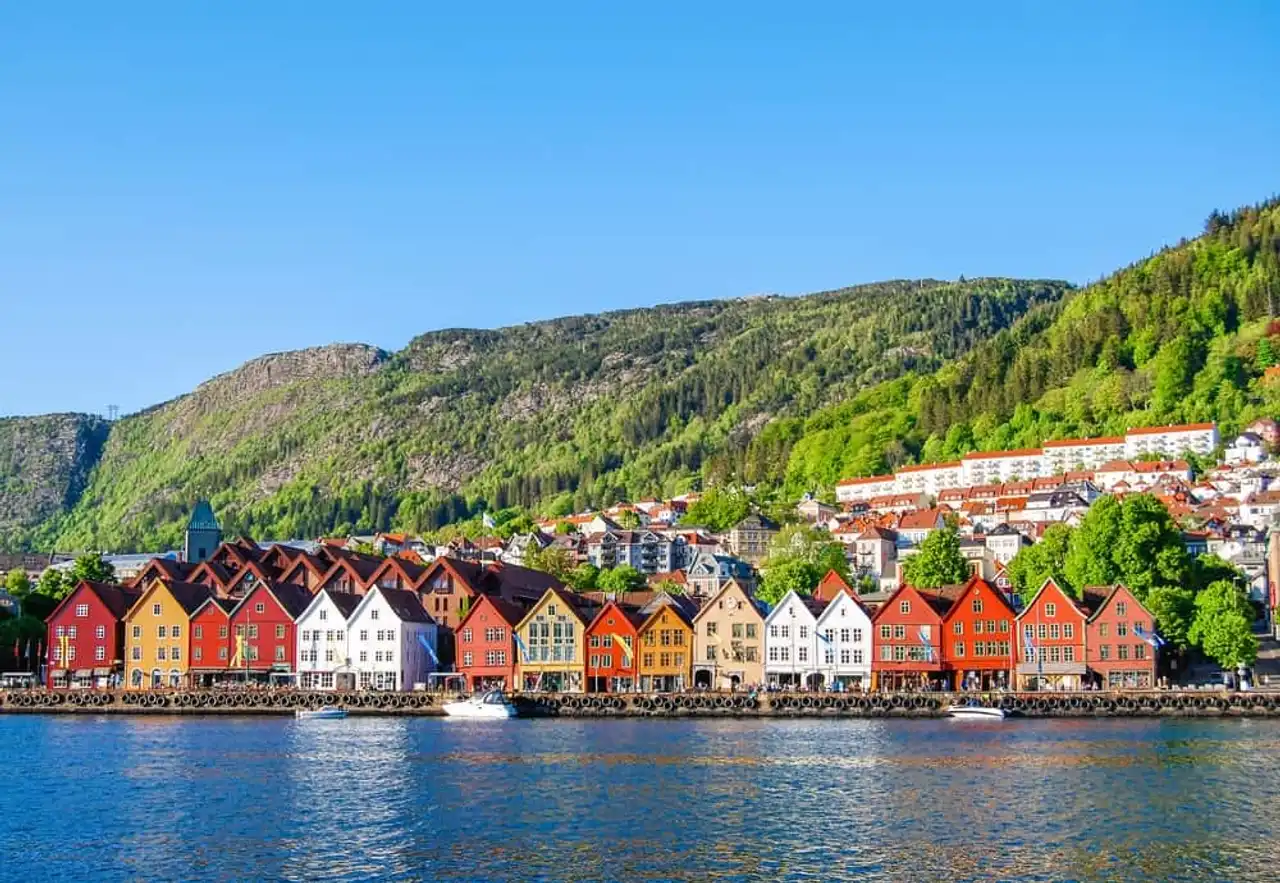
Photo credit: Shutterstock – Mark and Anna Photography
So don’t hesitate to taste local gastronomy, to stop in bars to listen to regional music groups – who knows, the new Kygo in the preview – and of course visit some museums.
The Hardangerfjord will not easily be tamed. The second largest fjord in Norway, his visit will necessarily take place in several stages. The panoramic road R7 will be a great ally to access the must-see places. Moreover, the many villages around it are all places to stop at night.
Start with Norheimsund where one of the most famous and photographed cascades in the country, the Steindalsfossen. Either you look at her face, or you embark on the little path that will allow you to admire her from above. In both cases, take the time to listen to the water that flows and breaks down.
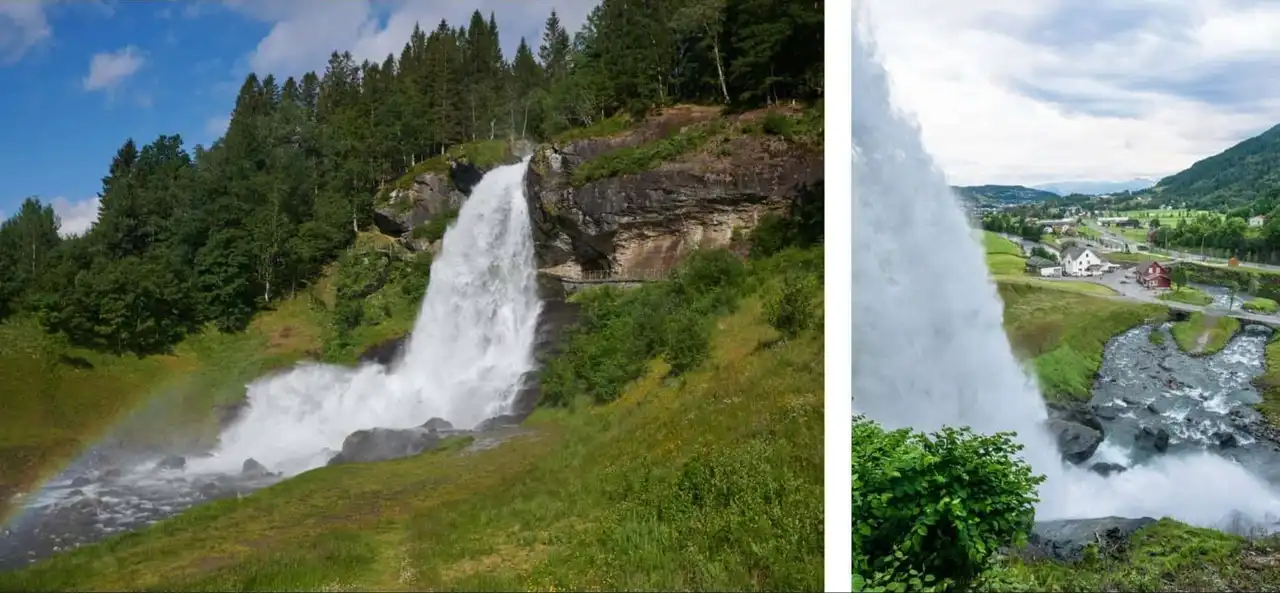
Image of the Steindals waterfall, view from below (left) and view from above (right) – Photo credits: Shutterstock – MortenHeiselberg & Pe3k
Then we recommend going to Tørvikbygd to take a ferry to Jondal. Apart from its nicknamed church “The Hardanger Cathedral”, this hamlet serves mainly to go to the summer ski centre of Folgefonn with a bus. This magnificent glacier is the perfect place to take a large bowl of pure air. By looking for the highest point, you will surely see the apple fields in this polar setting.
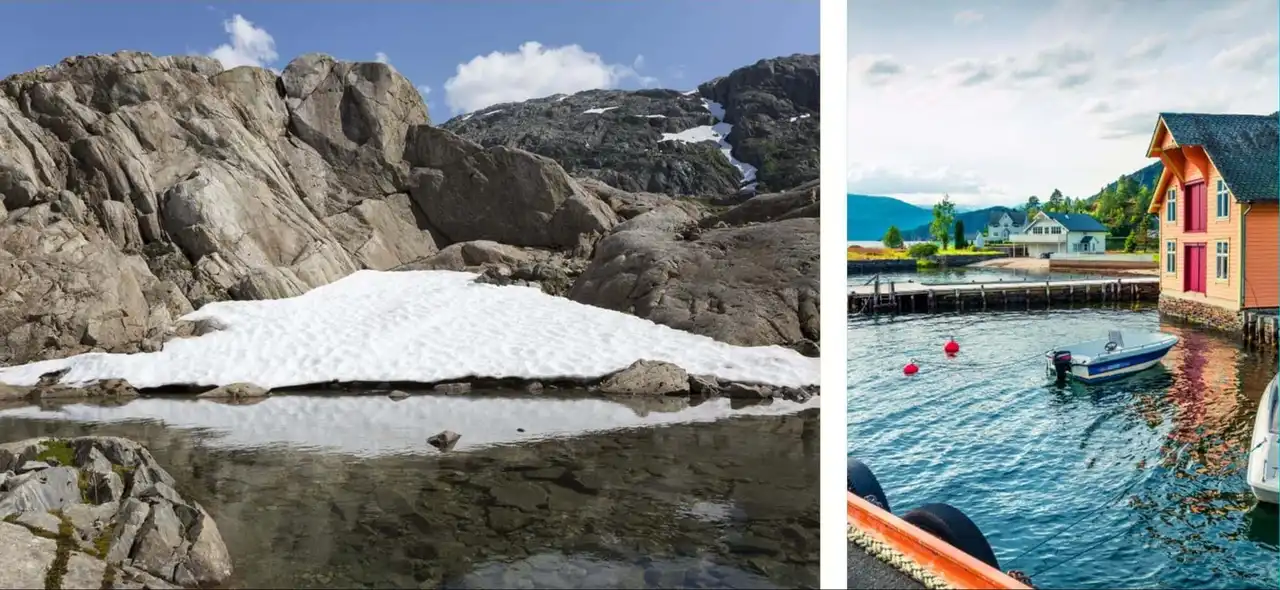
Folgefonn to the left and the city of Jondal to the right – Photo credits: Shutterstock – Andrew Mayovsky & Gertjan Hooijer
Imported in the region in the 13th century, apples produced in Hardanger account for more than 40 per cent of national production. But what also makes his fame is... his cider! Norway even received two gold medals and six silver medals at the CiderWorld Awards.
The most famous remains "Hardanger cider", a name of origin controlled since 2011. According to Norwegians, its flavour could even make its cuti shine to any Bretons or Normans. Take a few bottles to do the test.

Photo credit: Shutterstock – Sigrid Eriksen
Then go back to Jondal to take back your locomotion way in order to sink into the Odda valley. The waterfall lovers will then be filled. Over 10 km waterfalls go so fast that you will no longer know where to give head. Tjørnadalsfoss, Strandfoss, Vidfoss, Espelandsfoss and Låtefoss... So many places that deserve to be discovered, special mention to the last city.
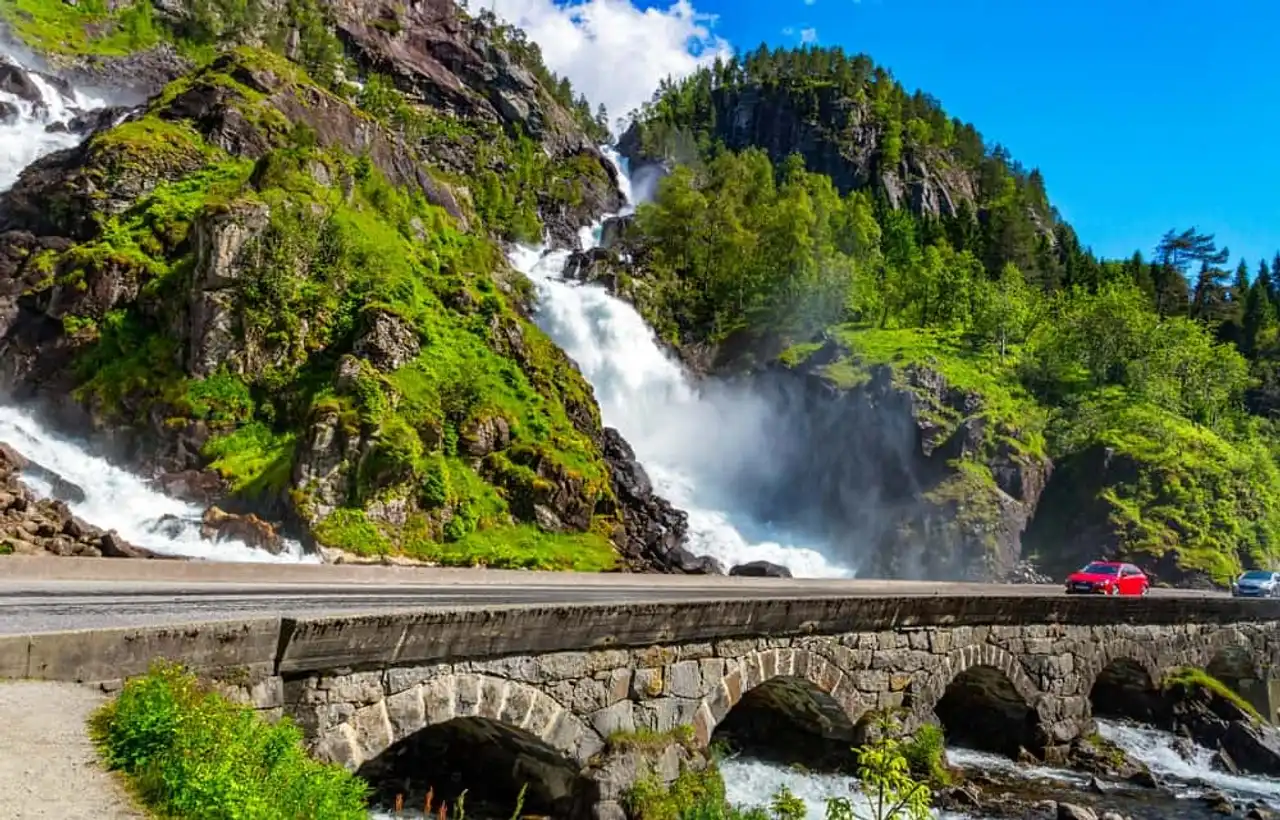
Photo credit: Shutterstock – KatrineAanensen
Indeed, if you take a place on the stone bridge, you will discover while this cascade has the particularity of being scolded in two streams of water that then join just under your feet. A magical natural show!
To regain height, a stop in Tyssedal is necessary. Take a hike to Ringedalsvatnet Lake. Your arrival point will be the rock of Trolltunga, perched at 700 meters above the lake. So yes, still green to loss of sight, still a clear water, still the noise of nature but, decidedly, you still can’t get tired of it. Everything looks so pure, so calm... Why leave?
3. Sognefjord, the master of the place
Back in Bergen, your fjord addiction forces you to continue to the North to get to know the Sognefjord. The second largest fjord in the world, the first in Europe, is divided into several arms, the most famous of which is the Naeroyfjord.
After taking your eyes full by climbing ever higher, stay at the water level this time. In the village of Gudvangen, you will face two choices of horn. The first, taking the electric ferry – it’s better to enjoy the landscapes with silence as the only companion – or rent a kayak to make the same journey. Take his time by risking to have the hardened arms or get lost at the rhythm of the water while being in a time-bound visit, to decide!
Before boarding, learn about the predominant role of water in this valley. Indeed, some villages that you will cross during your walk are not connected by any road and without it they would be completely isolated. The Norwegians even consider the Sognefjord as a "roadway" to the sea!
You will begin by seeing the Kjelfossen, an impressive cascade that devalues the mountain on 755m in several jumps, the highest of which is 149 m. It is in June that its flow rate is the most impressive. Thanks to a warmer temperature, the melted snow feeds the waterfall, offering a spectacle of all beauty!
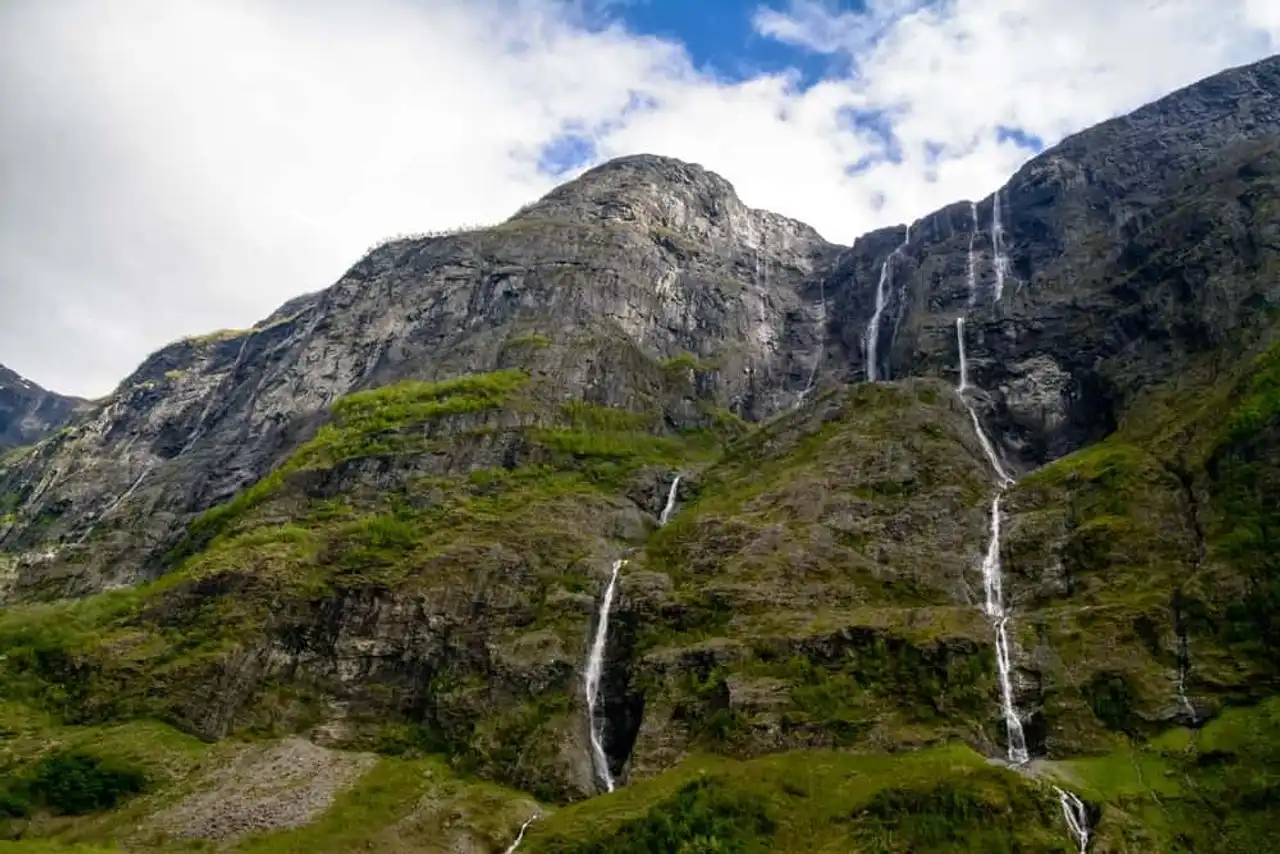
Photo credit: Shutterstock – Murat Can Kirmizigul
A few kilometers further hides the tiny village of Bakka and its white wooden church. Built in 1859 by Christian Henrik Grosch, its relative size does not reflect its importance. Indeed, before its consecration on 11 May of the same year, people living along the Nærøyfjorden had to go to Undredal – about 200 kilometers away – to practice their faith.
A few paddles later – or just a few minutes later if you are on board the ferry – you will fall on Styvi. This old farm is unoccupied on the 3⁄4 of the year, only in the summer a couple comes to live it. The place was transformed into a small museum and few are the tourists who venture. Indeed, no road leads to Styvi, only the ferry stops on request.
But smallness can make it proud. Styvi is proud to have the smallest post office in the world with its own postal code (5748 STYVI). On the opposite bank is a patelin whose history is substantially identical. A walk in this ghost village is a great idea to rest a little and to build your arms.
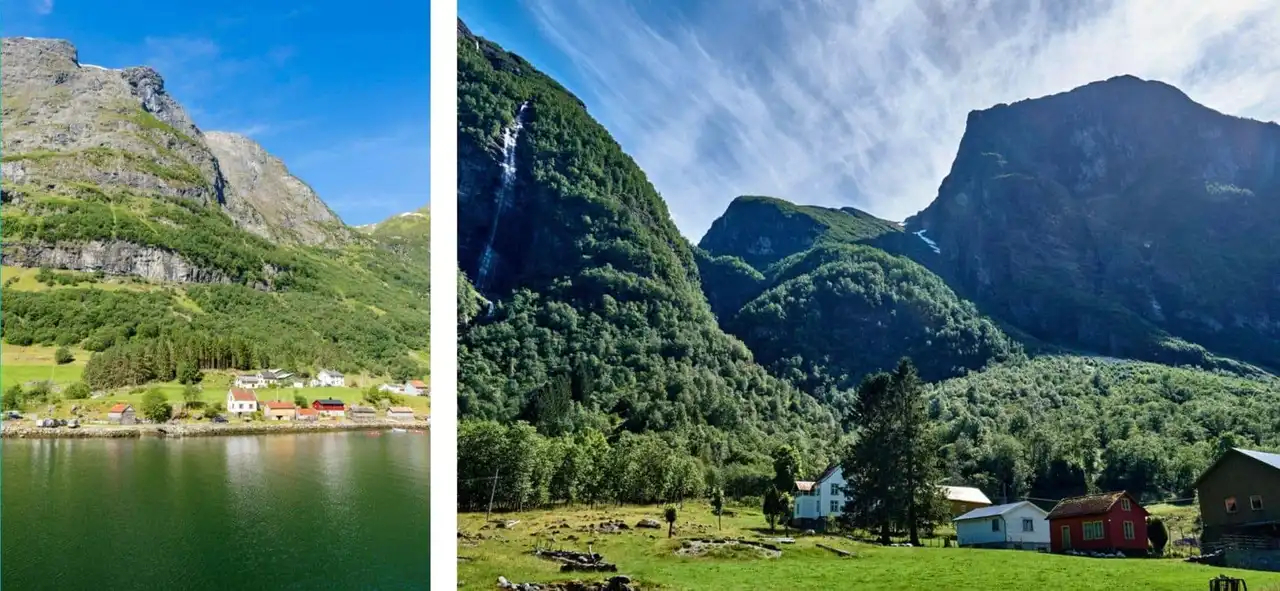
Dyrdal left and Styvi right – Photo credits: Shutterstock – Henryk Sadura & Dignity 100
By taking your exploration you should hear again the water that breaks in the river. Then you will not be far from the Sagfossen cascade. Proof that the waterway was the one to prefer, you can only see Sagfossen by boat – or by kayak – from the fjord. Once again, this scene blew you up.
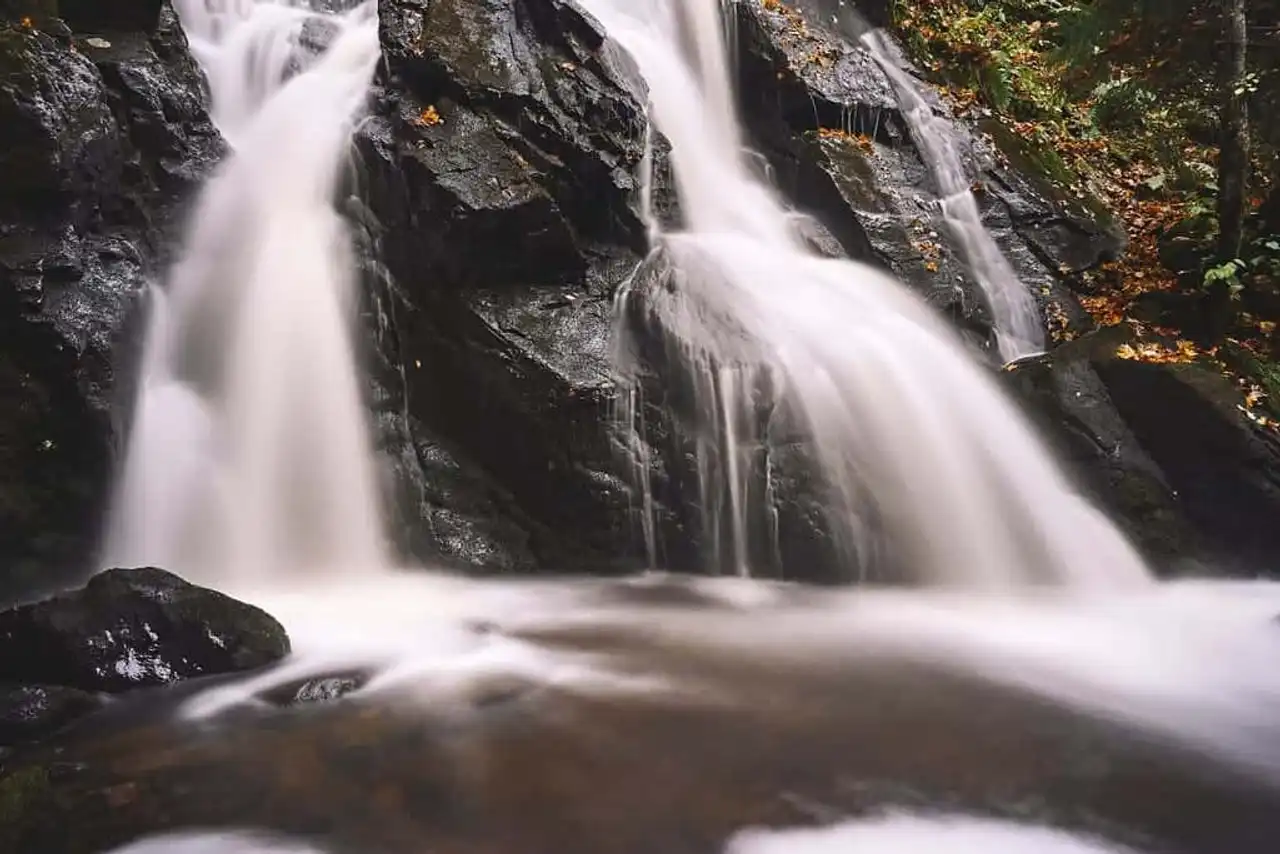
Photo credit: Flickr – Øyvind Holmstad
Until Kaupanger you will witness a succession of camels whose enclaved appearance causes in you a storm under a skull. How do we live here, far from everything? And yet, the small farms hung on steep sides have existed for immemorial times... Life always finds its way...
It’s the time to turn back, the opportunity to see again all the wonders you’ve seen on the way.
4. Geirangerfjord, the most mythical
By leaving Bergen you will have the heavy heart and the 7h road that separate you could give you the blues of the fjords. Stop grinding black immediately because Geirangerfjord is considered the most beautiful in all of Norway.
The 3 cascades
The powerful cascades sheltered by this fjord make the fame of this country. They are of course associated with local legends. To discover them, nothing better than a hike although the ferry can also satisfy your thirst for curiosity.
Once upon a time, a prince lost in the area. Looking for a lodging where to sleep, he was greeted by a man who had 7 daughters, all more beautiful than others. The prince fell in love with it, but did not know which one to choose. At the end of the « pretty » part of history, the suite is less reluctant.
Each evening, each of the sisters came to share the layer of the monarch. And every evening he promised them to make a choice and marry one of them. This day never arrived. Over the years, the sisters have become unconsolable and have begun to shed torrents of tears. These eventually formed the 7 streams of water that formed the cascade of the 7 sisters.
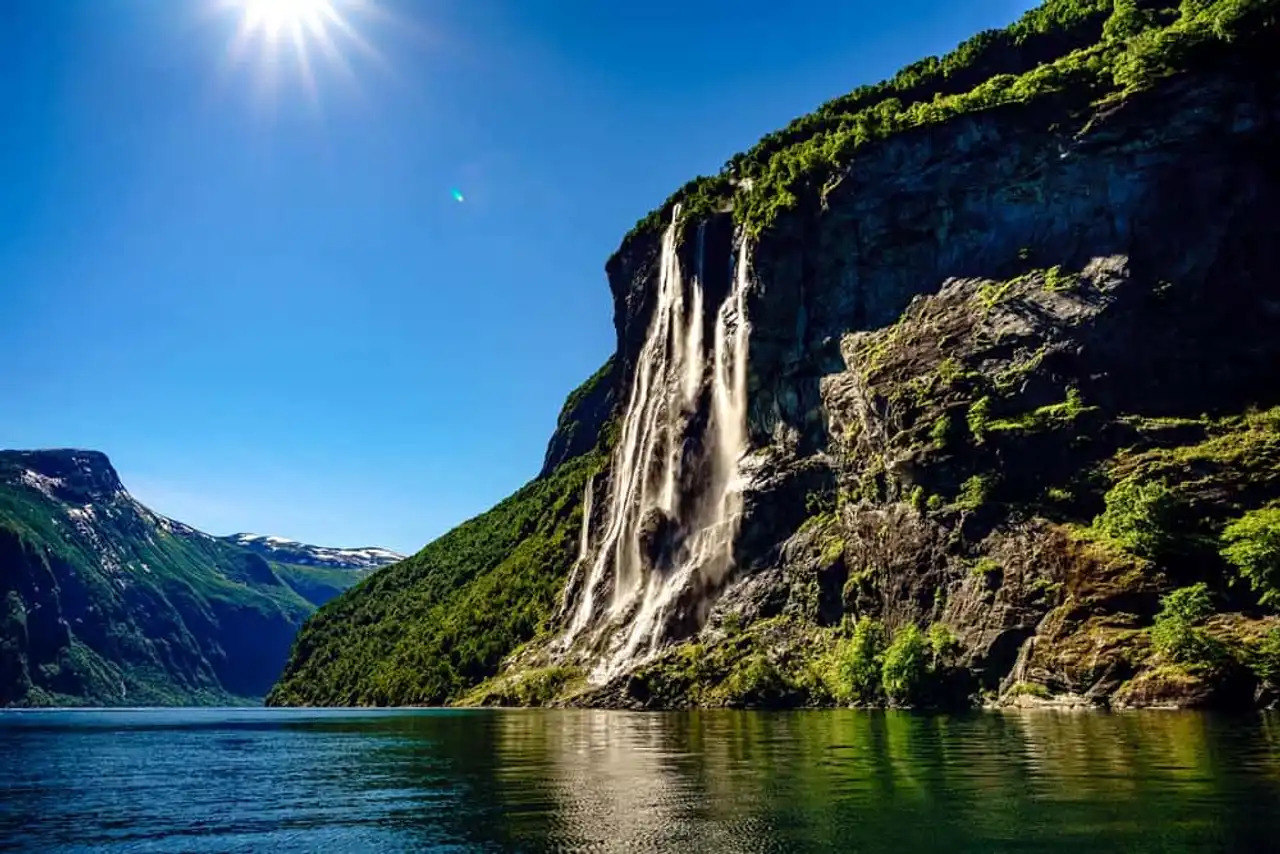
Photo credit: Shutterstock – Andrey Armyagov
A waterfall faces him. This is the cascade of the pretender in reference to the prince and, as the man represented, she contemplates them tirelessly without making a choice. A third cascade is located not far from there that the Men decided to name “the Sail of the Bride”, symbol of the event that did not arrive. Never join, the three natural monuments form a Holy Trinity of sadness...
To meet the Trolls
Since you have adventured on mythical lands, continue your trip under this theme. Starting from Geiranger, take Route 63 then a ferry to discover the Trolls road. Like your Øygardstøl, many laces make it. But unlike the other, she had the right to her panoramic route from Norway.
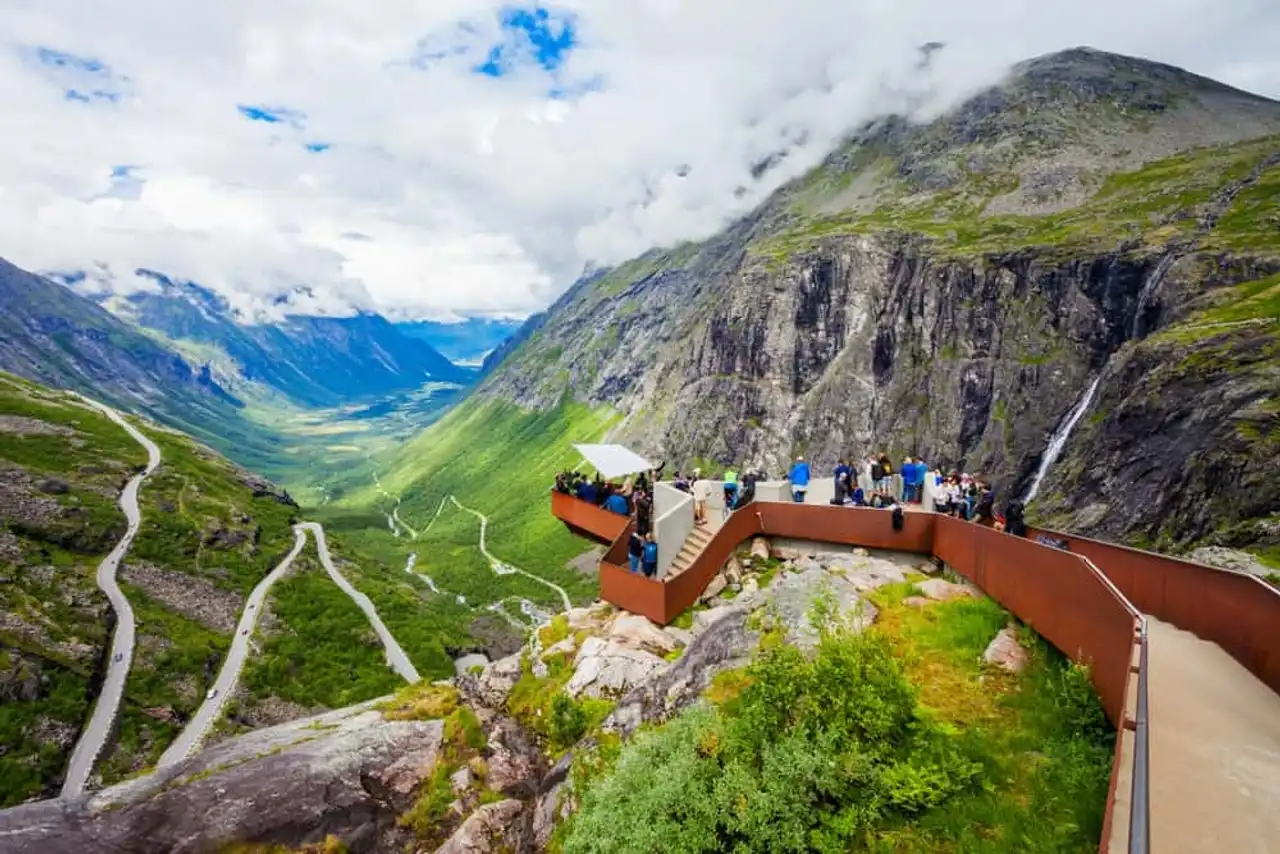
Photo credit: Shutterstock – saiko3p
It is in the era Viking that we owe the first appearances of trolls in Norwegian folklore. The Nordic people worshiped nature and used nature to pay tribute to it. They then began to contain many sagas between forests, fjords and mountains.
According to Scandinavian mythology, there are two kinds of trolls. Some rather ugly stone giants hidden in the mountain, letting themselves see only at night, and smaller ones living in a group in the forest. These are more similar to our kind lutins.
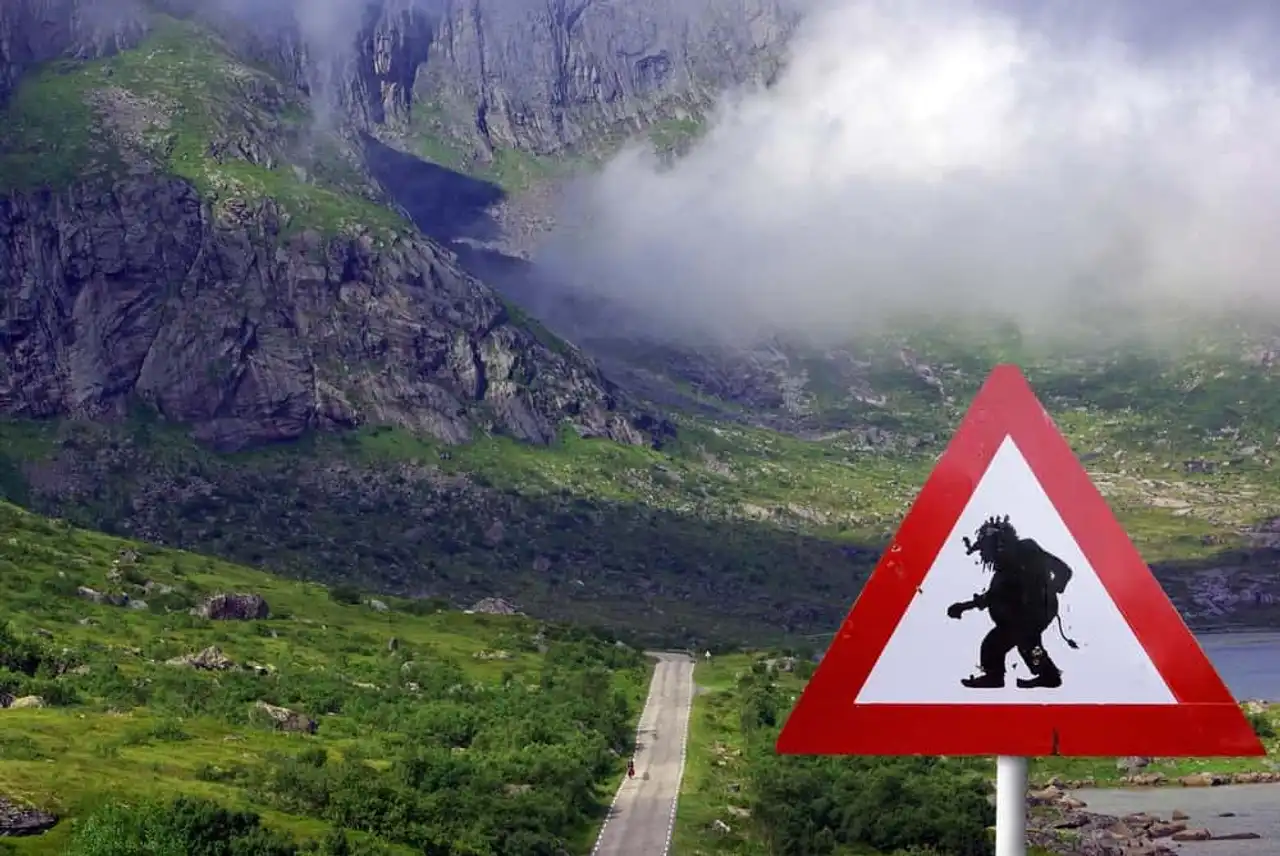
Hope you don't believe a troll... – Photo credits: Shutterstock – Bildagentur Zoonar GmbH
Throughout the road, perfect glass platforms are present to make you discover the panoramas. Once again you immerse yourself in this magical nature made of turquoise lakes, thick forests and green valleys. It all seems so unreal. For those who would like to make a new walk on foot, at the top of the road is a tourist center from which a hike will take you to Lake Bispevatnet.
While you believe that the end of your journey will soon reach its end – there is only one fjord to visit – you type the coordinates of the Trollfjord and discover that more than 1,200 kilometers separate you from your destination. Of course, don’t try to do them in one day. Enjoy it to stop in cities like Molde, Trondheim or Bodø to lighten your journey time.
5. Trollfjord, to the end of the world...
There's a fjord that deserves it! It has been almost eternity since your last ascent and necessarily your desire to find a new green setting is at its paroxysm. So it’s time to take the boat one last time to visit the Trollfjord.
The battle of herring
Only a ferry will allow you to discover the natural charms of this fjord. Do not fear for your promise, its position close to the arctic circle disarms many tourists. You won't be able to cross a lot of people. It’s gone for 3 hours of walking through the water.
You will then discover a preserved natural wonder. Unlike its West Coast brothers, the Trollfjord has no colony along its shores. On the one hand, the weather is not the most welcoming. Even though the entire fjord is frozen. This has even led to a conflict between fishermen.
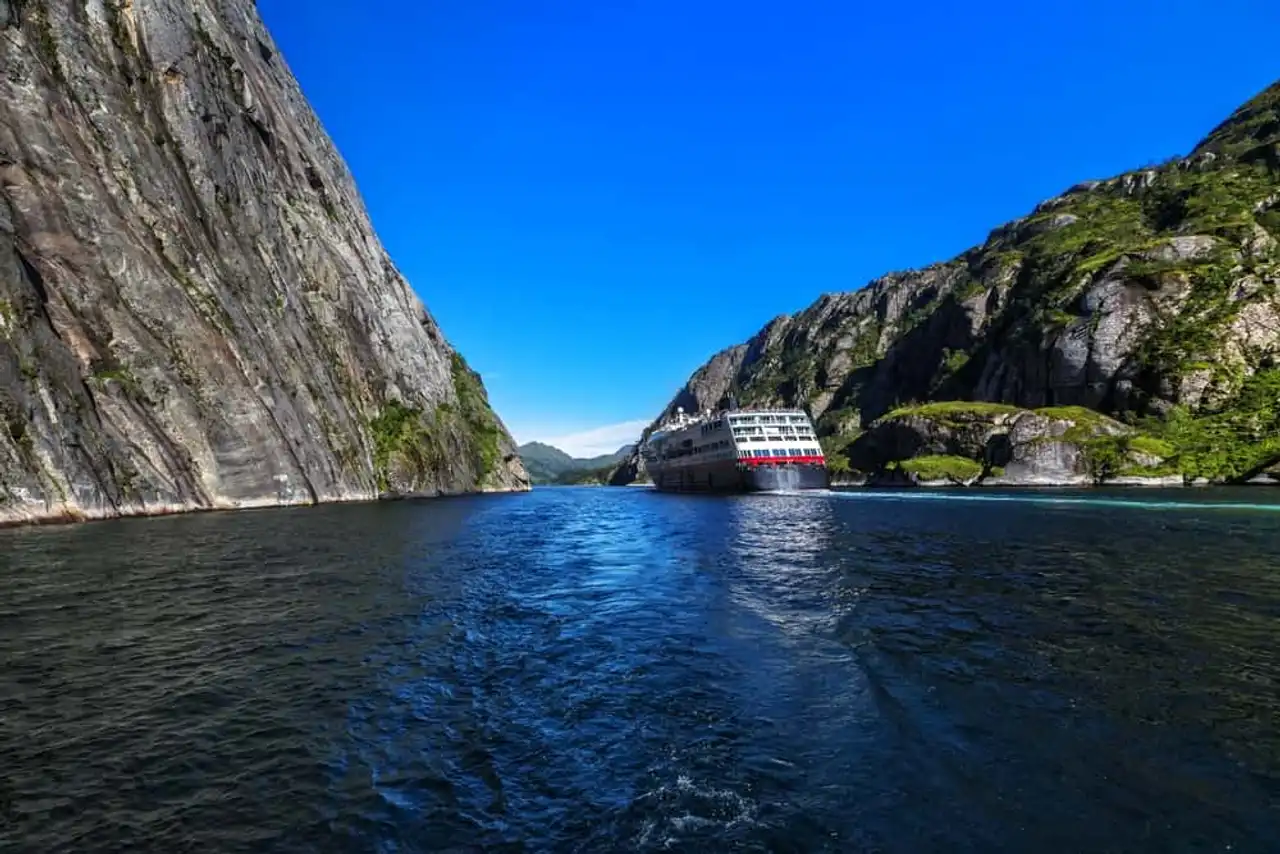
Photo credit: Shutterstock – May_Lana
More than a century ago, two types of fishermen distinguished themselves. Those who used a rowing boat and those who had a boat with a steam engine, the first ones who needed to break the ice to fish. However, the manslaughter was not rigour and the steam-boat fishermen had 40% of the fish brought back by their congeners.
But on the night of March 5-6, 1890, a violent storm raged and broke the ice. The rowing fishermen rushed to bring a maximum of herrings. By making a blockade with the net on the narrowest part of the fjord, they managed to catch an incalculable number of fish.
This technique led to the emergence of other fishermen, hence the fierce battle that followed. The scene was represented in a painting by Norwegian artist Gunnar Berg. Currently is exhibited in an art gallery in Svolvær, this Norwegian art work is one of the most recognizable in the world.
It is difficult to imagine such a conflict while silence reigns in the valley. And yet... Enjoy the last waterfalls in front of your eyes, the bright green of the flora and always the crystalline aspect of the river. All this will unfortunately be behind you, but why not offer you a last little kiff visiting the Lofoten Islands ?
The Lofoten Islands
This archipelago is above the polar circle. Again, nature could develop quietly without being too disturbed by men. Indeed, the capital of the island, Svolvær, has less than 4,500 inhabitants. Located on the island of Austvågøya, it owes its important status only because most tourists approach the archipelago by this charming village. It even has an airport!
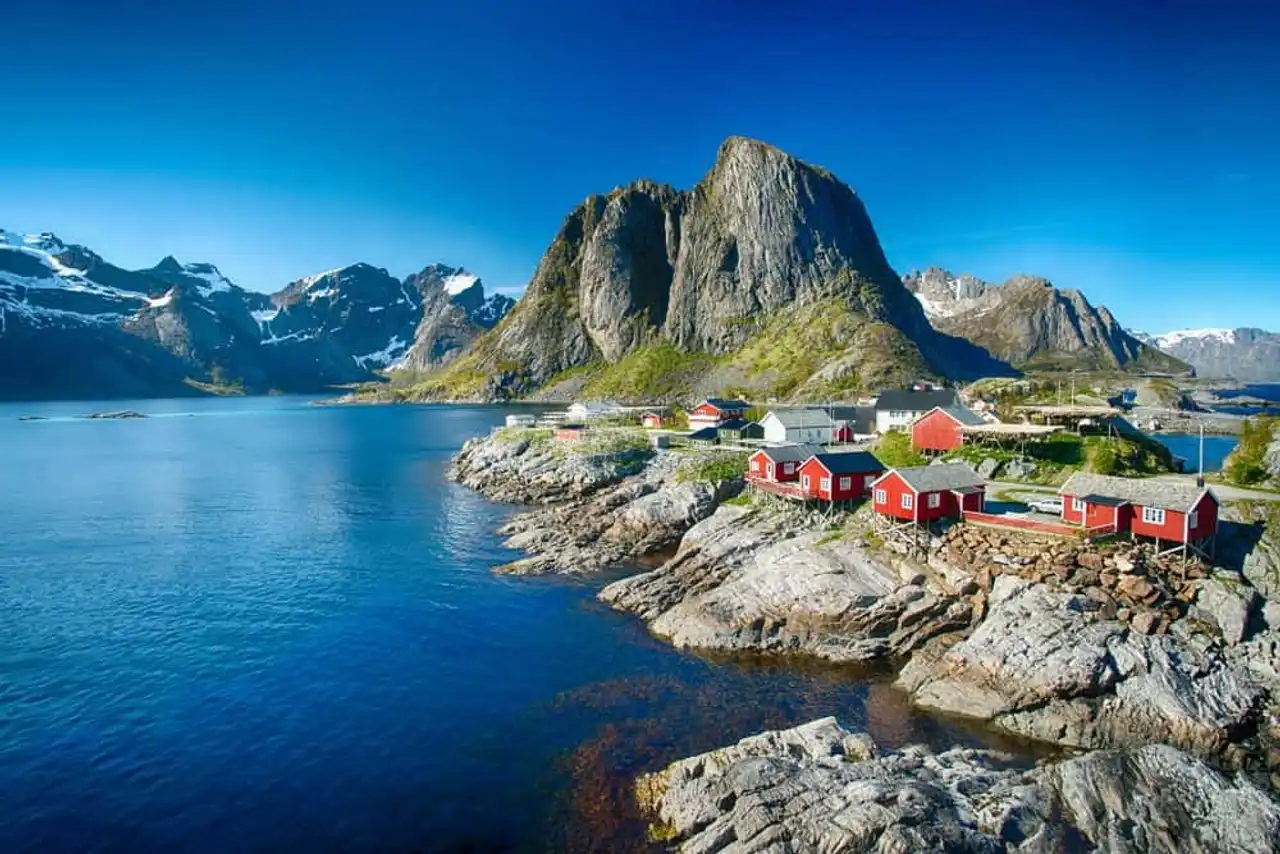
Photo credit: Shutterstock – Jarmo Piironen
Apart from the walks to be done between all these mountainous peaks that arise in the middle of the sea, you can book a trip to observe the great marine mammals. Following the seasons, whales and orques will come to meet you.
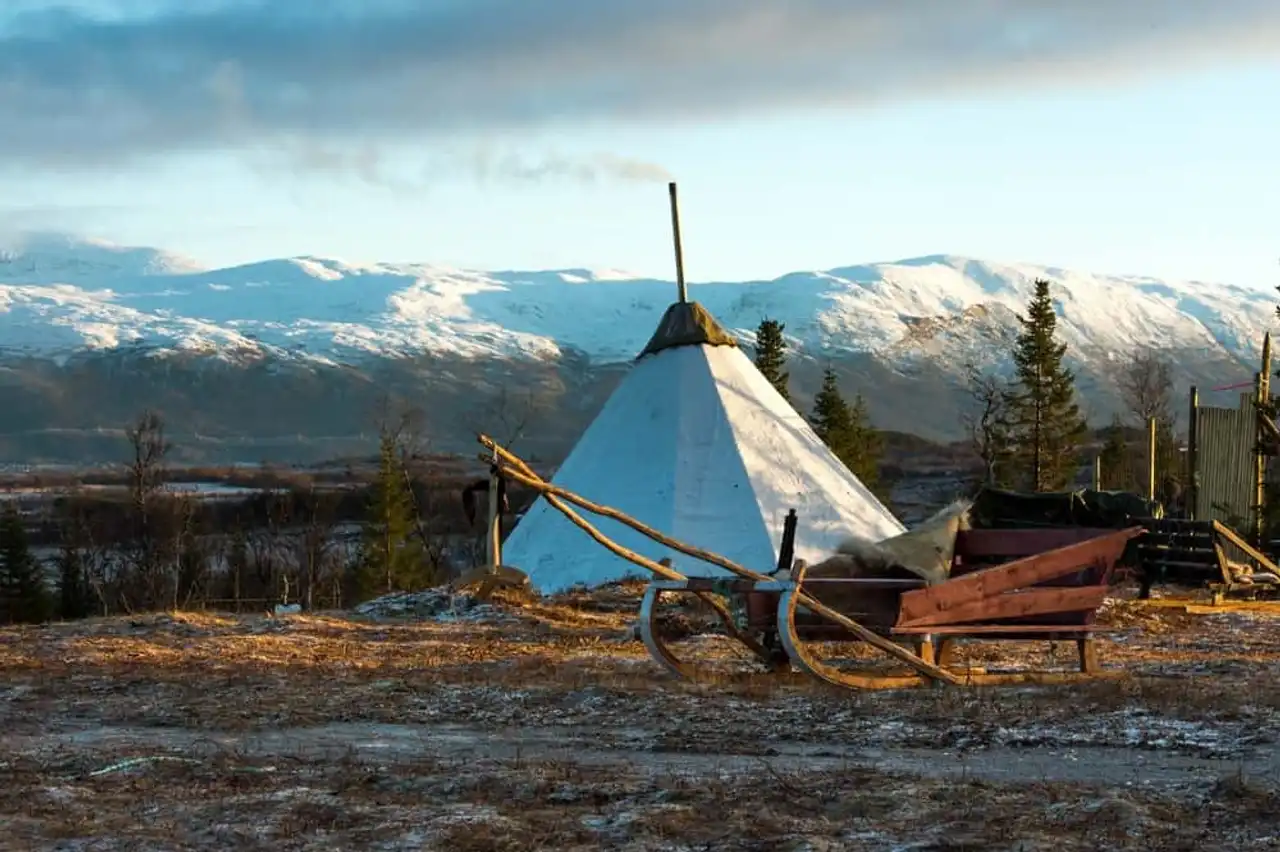
Photo credit: Shutterstock – V. Belov
Well, if you see a tipi, don't think you're crazy! You are simply facing a typical building of the Sami people, the natives of Northern Norway. From Lapland to your resort, it is more than 80,000 people who are scattered on these snowy lands. Learn more about them would be a good way to finish your journey in beauty.
All good things unfortunately have an end. The return journey will be charged with emotion and it is the big heart that you will leave your green patches. Now you understand why some rankings put the fjords in front of the Egyptian pyramids, the Galapagos and even the Maldives? The answer is in the question...
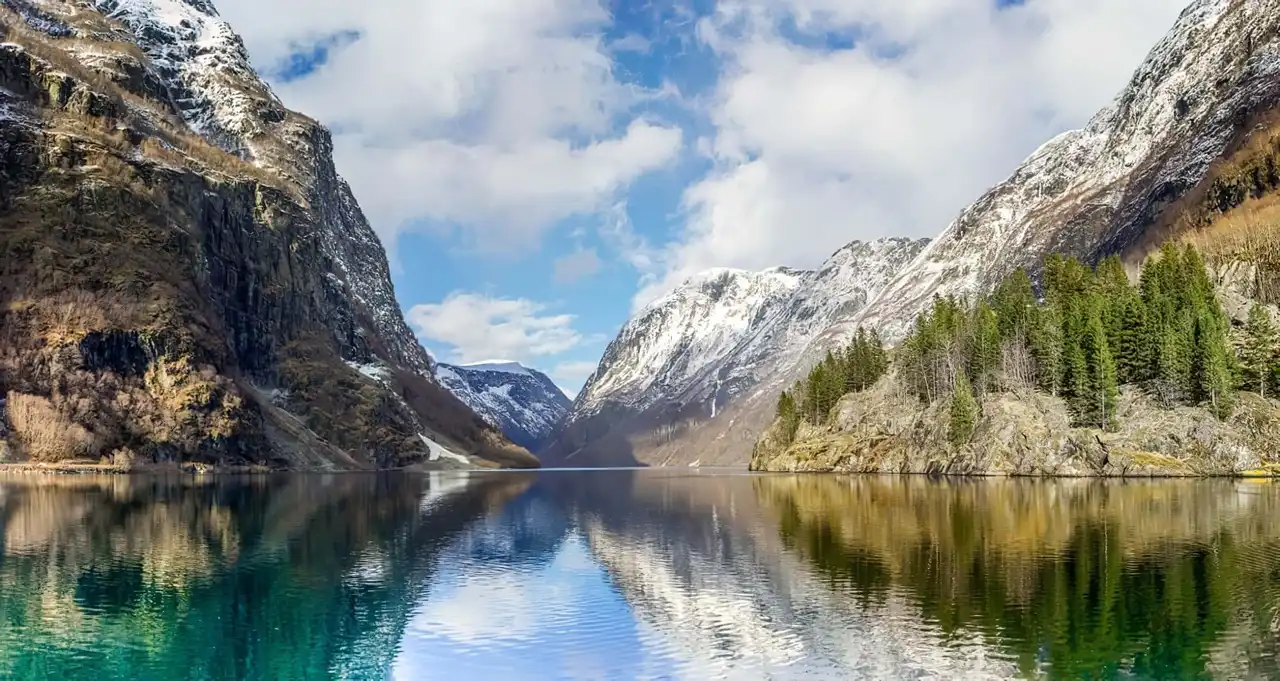




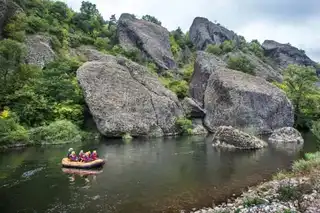
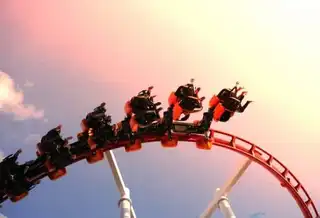

Loading comments ...